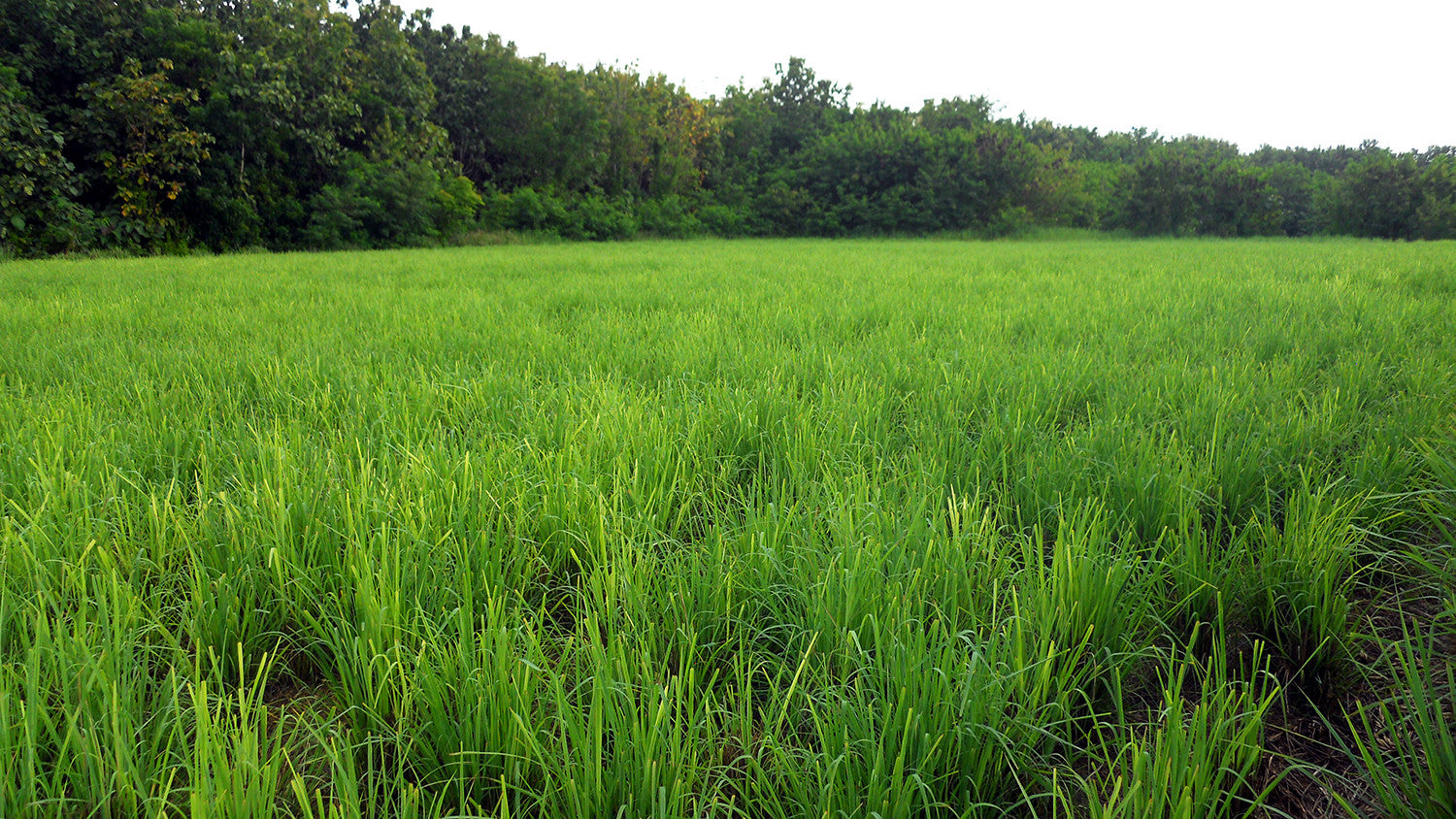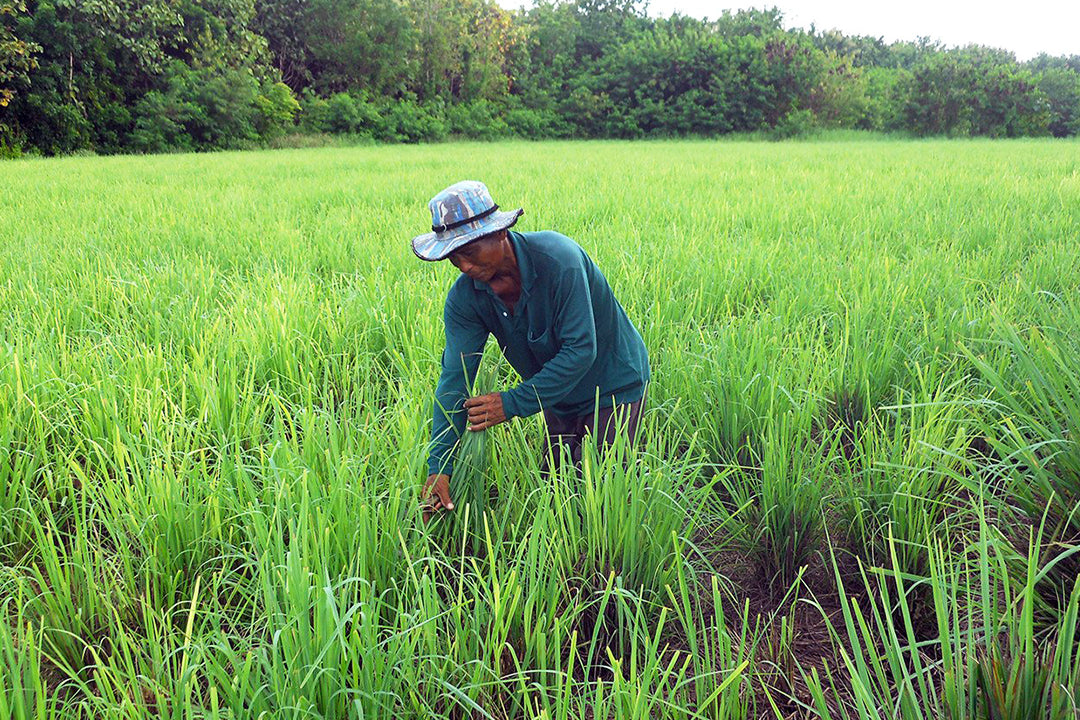Join us on a journey to Southeast Asia, where we meet with the farmers who supply us with our amazing Thai lemongrass. A warm, tropical climate with sunshine year-round, sweltering heat, and waves of rain...all these elements come together to produce an environment where lemongrass thrives.
Lemongrass Oil
Thailand produces outstanding lemongrass, with our favorite flavor profile. With its incredibly lemony and fresh flavor, it truly is like no other lemongrass. We buy large cuts to retain the oils (where much of the flavor comes from), and mill the lemongrass ourselves to preserve its intense lemon essence and freshness.
This plant is an essential ingredient in several of our most beloved blends, including Lemon Ginger, Mango Passionfruit, Moroccan Mint, Wild Raspberry Hibiscus, and more.
Lemongrass Farms
Our lemongrass is grown in Phetchabun Province in central Thailand. Rather than enormous fields of tall plants, you’ll find half-hectare plots, all privately owned by hundreds of farmers who grow, harvest, and sell their lemongrass in small batches to our supplier.

Thai lemongrass agriculture is a family trade. Fields are owned and farmed by local families, who continue to use traditional farming methods, including harvesting by hand using scythes. Lemongrass is cut every 3 to 4 weeks and it takes up to a week to cut a field.
Cutting Lemongrass
Lemongrass is continually harvested throughout most of the year, although this is a crop whose quality is highly dependent on weather and growing conditions. Rather than stocking up and filling large warehouses, Thai lemongrass is produced to order so that only the freshest ingredients are shipped out.
While this is wonderful for maintaining the quality of our teas, it also means that when weather conditions become uncooperative, supplies become very limited. If lemongrass grows too quickly, we cannot use it because its flavor is weak. If lemongrass grows too slowly, we may not have enough to blend into our teas.
It’s a delicate balancing act, but an important one to maintain in order to continue purchasing the very best lemongrass we can find.
After a few days visiting Thailand, our team hopped on a plane for Vietnam.
 Lemongrass cut with a scythe.
Lemongrass cut with a scythe.
Sourcing Stash
We travel around the world to visit the places where our tea ingredients are grown. Whether it's walking along tea bushes in India or peppermint fields in the Pacific Northwest, it is part of our sustainable sourcing program to feel confident in how our ingredients are produced.
We want to confirm with our own eyes that suppliers are following our Code of Conduct and that their practices match our values as a global citizen. This frequently means checking in on living conditions for workers, the cleanliness of processing facilities, making sure safety programs are in place for employees, and more.
It is also about relationship development. We want to know our suppliers personally, meet with farmers, and build close bonds. In working together, we are able to work more closely and better align our common interests.



